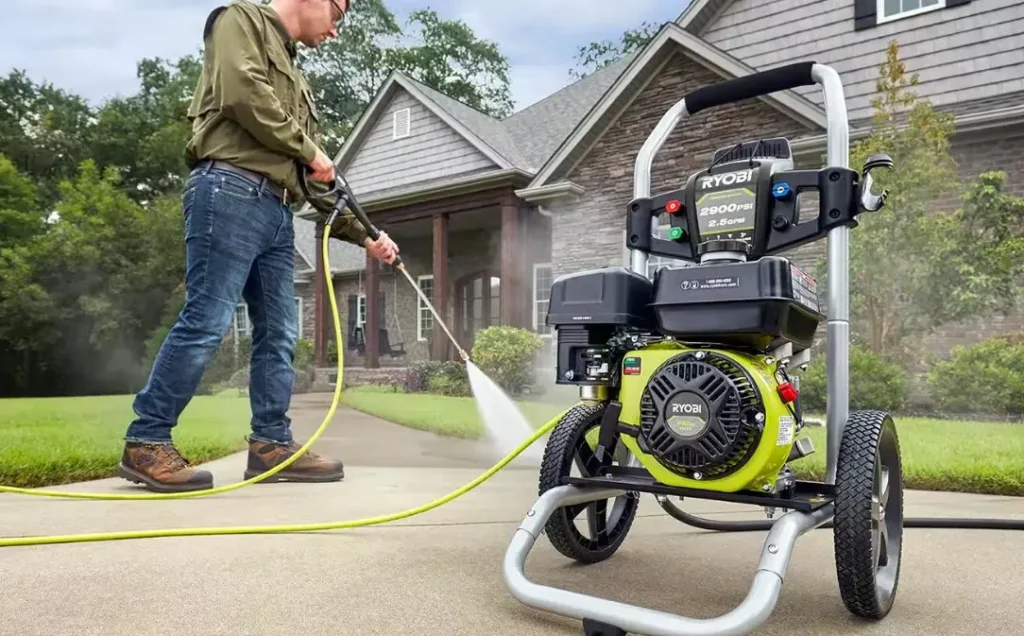Getting the most out of your cleaning projects while maintaining safety should be your top priority when operating high-powered equipment. The powerful stream from a pressure washer can transform grimy surfaces into spotless ones in minutes, but this same force demands respect and proper handling. When used incorrectly, these machines can damage property or cause serious injuries. Drawing from professional cleaning standards and manufacturer recommendations, this guide walks you through essential techniques, safety protocols, and maintenance practices that ensure optimal results while preventing accidents or equipment damage.
Understanding Pressure Washer Basics
The cleaning power of pressure washers comes from their ability to concentrate water through a small nozzle at high pressure. Most residential models deliver 1,300-2,800 PSI (pounds per square inch), while commercial units can exceed 4,000 PSI.
Water volume matters just as much as pressure—measured in GPM (gallons per minute). A higher GPM rating means faster cleaning as more water hits the surface. The combination of pressure and volume determines the true cleaning power.
Choosing the Right Equipment for Your Task
Matching the machine to your job prevents frustration and damage:
Electric pressure washers (1,300-1,800 PSI) work well for cars, patio furniture, and small decks. They’re quieter and maintenance-free but require a nearby outlet.
Gas-powered units (2,000-3,000 PSI) handle tougher jobs like driveways, large decks, and siding. They offer greater mobility but require more maintenance and produce emissions.
Hot water pressure washers excel at removing grease and oil but cost substantially more than cold water units.
Essential Safety Precautions
Never point the spray at people, pets, or yourself—even at low pressure. High-pressure water can cause serious injuries, including infections from bacteria forced under the skin.
Wear closed-toe shoes, long pants, safety glasses, and hearing protection. Consider waterproof gloves to improve grip and protect your hands.
Test surfaces in an inconspicuous area before full cleaning. Some materials like soft wood, old mortar, and certain painted surfaces can’t withstand high pressure.
Be mindful of electrical hazards. Keep connections dry, use GFCI-protected outlets, and never operate electric models in standing water.
Technique Matters: Mastering the Proper Approach
Start with the widest spray pattern (usually 40 degrees) and gradually decrease to more focused spray patterns as needed. This prevents accidental damage from starting too aggressively.
Maintain a consistent distance from surfaces—generally 12-18 inches for most cleaning tasks. Move closer for stubborn spots but be cautious of potential damage.
Clean with smooth, overlapping strokes. Move the wand in steady, controlled motions rather than erratic patterns that might leave streaks or miss spots.
Work from top to bottom on vertical surfaces, allowing dirty water to flow downward without contaminating clean areas.
Pre-Cleaning and Detergent Application
Remove loose debris before pressure washing. This prevents clogging and improves efficiency.
For tough stains or biological growth, apply appropriate detergent with the pressure washer’s soap attachment. Let it dwell 5-10 minutes without drying, then rinse thoroughly.
Never use bleach in your pressure washer—it can damage internal components and create hazardous spray. Choose detergents specifically formulated for pressure washers.
Maintenance for Longevity
Flush the system after using detergents by running clean water through the machine for several minutes.
Release pressure from the system before disconnecting hoses or storing the machine. Never leave a pressurized machine unattended.
Store properly in a frost-free location. For gas engines, consider fuel stabilizer if storing for extended periods.
Regular inspection of hoses, connections, and spray tips prevents unexpected failures and ensures consistent performance.


